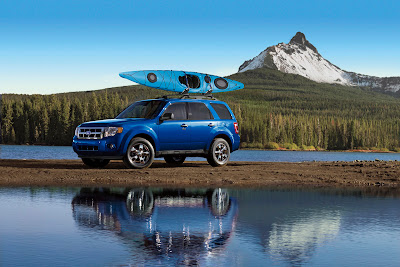ADVERTISEMENTS
As crude oil reached $91 a barrel on the New York Mercantile Exchange last week, U.S. gasoline prices started going up reaching an average value of $3.05 per gallon. That’s about half a dollar more than what Americans had to pay a year ago and the highest level since October 2008, according to the U.S. Department of Energy. Diesel prices have also increased to an average of $3.29 a gallon.
If the trend continues, we might see owners of large SUVs going for more fuel-efficient crossover models and trade-in values could plummet as well.
Alec Gutierrez, lead analyst for vehicle evaluation at Kelley Blue Book, said that large SUV sales could take a hit if the gallon reaches the $3.50 to $4 mark. However, since the last price spike registered in spring 2008, sales have only fallen about 1%, so this time around the “damage” shouldn’t be as big as two and a half years ago.
“If you see a 20-to-30 cent price increase per gallon over the course of a couple weeks then of course people are going to panic”, he said, “but if it increases steadily over time that gives the market a chance to react rationally”.
Nevertheless, many people could change their buying habits and opt for smaller SUVs and crossovers, such as the Ford Escape, Nissan Rogue, Honda CR-V and Toyota RAV4.
“The American consumer still generally wants to have a vehicle that offers a lot of utility but at the same time they are conscious of the fuel economy that the vehicle offers and what they are going to pay at the end of the month”, Gutierrez commented.
Another side effect of the rising fuel prices could be the plummeting trade-in values. It happened in 2008 and it could happen once again, so many dealers are scaling back the number of large SUVs available for sale.
“SUVs are still important in this area, but people are downsizing to more fuel efficient SUVs instead”, said Dennis Egglefield, owner of Egglefield Ford in Elizabethtown, N.Y. But as gasoline prices rise, “we are still stocking with the idea that it may go either way. Hoping for the best, but prepared for anything”, he added.
photos
Read more In Cars
If the trend continues, we might see owners of large SUVs going for more fuel-efficient crossover models and trade-in values could plummet as well.
Alec Gutierrez, lead analyst for vehicle evaluation at Kelley Blue Book, said that large SUV sales could take a hit if the gallon reaches the $3.50 to $4 mark. However, since the last price spike registered in spring 2008, sales have only fallen about 1%, so this time around the “damage” shouldn’t be as big as two and a half years ago.
“If you see a 20-to-30 cent price increase per gallon over the course of a couple weeks then of course people are going to panic”, he said, “but if it increases steadily over time that gives the market a chance to react rationally”.
Nevertheless, many people could change their buying habits and opt for smaller SUVs and crossovers, such as the Ford Escape, Nissan Rogue, Honda CR-V and Toyota RAV4.
“The American consumer still generally wants to have a vehicle that offers a lot of utility but at the same time they are conscious of the fuel economy that the vehicle offers and what they are going to pay at the end of the month”, Gutierrez commented.
Another side effect of the rising fuel prices could be the plummeting trade-in values. It happened in 2008 and it could happen once again, so many dealers are scaling back the number of large SUVs available for sale.
“SUVs are still important in this area, but people are downsizing to more fuel efficient SUVs instead”, said Dennis Egglefield, owner of Egglefield Ford in Elizabethtown, N.Y. But as gasoline prices rise, “we are still stocking with the idea that it may go either way. Hoping for the best, but prepared for anything”, he added.
photos
Read more In Cars
Post Title → Rising Gas Prices Might Affect Large SUV Sales
ADVERTISEMENTS



